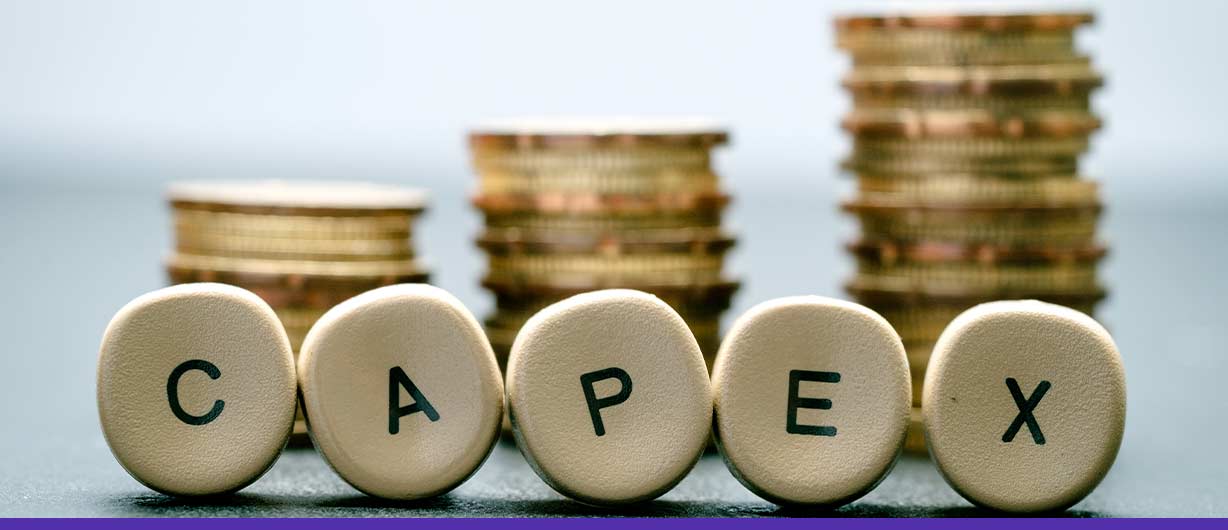April 10 2023 | By Farwah Jafri | 5 minutes Read

How Do You Know When to Capitalize and When to Expense?
Useful life
Materiality
Maintenance
Increase in value
Intention
Formula and Calculations of CapEx
Step 1: Identify the Asset
Step 2: Determine the Cost of the Asset
Step 3: Determine the Useful Life of the Asset
Step 4: Determine the Salvage Value of the Asset
Step 5: Calculate the Depreciation Expense
Step 6: Calculate the CapEx
Examples of Capital Expenditure
1. Purchase of machinery, equipment, and vehicles
2. Construction of new facilities
3. Upgrades to existing facilities
4. Investment in technology
5. Acquisition of other companies
Conclusion
Whether you’re an entrepreneur, or a business owner, understanding how to calculate CapEx is crucial to managing finances and making informed investment decisions. Capital Expenditure refers to the funds a company invests in its fixed assets, such as property, equipment, or machinery. These investments are made to improve the company’s productivity, efficiency, and profitability in the long term.
In this blog, we will provide a step-by-step guide on calculating CapEx and illustrate the concept with real-world examples. By the end of this guide, you will have a comprehensive understanding of CapEx and be equipped with the tools to make informed financial decisions for your business. So, let’s dive in and learn about the formula and examples for calculating CapEx!
To understand in a better way, there are a few factors to consider:
The asset is generally capitalized if it has a useful life of more than one year. For example, if a company purchases a new machine for its manufacturing facility that is expected to last for five years, the cost of the machine would be capitalized.
If the asset’s cost is relatively small, it may be expensed rather than capitalized. For example, if a company purchases office supplies such as paper and pens, these costs would be expensed rather than capitalized.
If the expense is incurred to maintain the asset’s current condition, it is typically expensed. For example, the repair cost would be expensed if a company repairs a machine to keep it running.
If the expense increases the value of the asset beyond its original cost, it is capitalized. For example, the cost would be capitalized if a company renovates a building to increase its value.
If the expense is incurred to generate revenue in the future, it is capitalized. For example, if a company develops software that it plans to sell, its cost would be capitalized.
The formula for CapEx is:
PP&E (current period) – PP&E (previous period) + Depreciation (current period) = CapEx
The first step in calculating CapEx is identifying the asset being acquired or upgraded. This could be a piece of equipment, a building, or a piece of land, for example.
Example: ABC Company is planning to purchase a new printing press.
Once the asset has been identified, the next step is to determine the cost of the asset. This includes not only the purchase price of the asset but also any associated costs, such as shipping, installation, and taxes.
Example: The purchase price of the printing press is $50,000. Shipping and installation costs are estimated at $5,000, and taxes are estimated at $2,500. Therefore, the total cost of the asset is $57,500.
The useful life of an asset refers to the period over which it is expected to provide benefits to the company. The company’s accounting policies typically determine this and may be based on industry standards or the company’s experience.
Example: The printing press is expected to have a useful life of 10 years.
An asset’s salvage value is the asset’s estimated value at the end of its useful life. This value is used to calculate depreciation expense over the asset’s life.
Example: The salvage value of the printing press is estimated to be $5,000.
Depreciation expense is the portion of the asset’s cost allocated to each year of its useful life. Several methods can be used to calculate depreciation, but the most common are the straight-line and accelerated methods.
The straight-line method divides the asset’s cost by its useful life to determine the annual depreciation expense. On the other hand, the accelerated method applies a higher depreciation rate in the early years of the asset’s life and a lower rate in the later years.
Example: The annual depreciation expense for the printing press is calculated as follows:
($57,500 – $5,000) / 10 = $5,250 per year
Finally, the CapEx can be calculated by adding up all the costs associated with acquiring or upgrading the asset.
Example: The CapEx for the printing press is calculated as follows:
Purchase price + shipping and installation + taxes = $50,000 + $5,000 + $2,500 = $57,500
Therefore, the CapEx for the printing press is $57,500.
Some of the examples of CapEx include:
A company may spend money on acquiring new equipment or machinery to enhance its operations, increase production capacity, or improve the quality of its products.
A company may construct new buildings or facilities, such as a new manufacturing plant, research and development center, or warehouse.
A company may spend money on upgrading its existing facilities to improve efficiency, increase capacity, or enhance its safety features.
A company may spend money on software, hardware, or other technological solutions to improve its operations, automate certain tasks, or enhance its products.
A company may acquire another business to expand its operations or gain access to new markets, customers, or products.
Calculating CapEx is an important part of financial planning for any company that acquires or upgrades fixed assets. By following the steps outlined in this blog, you can ensure that you accurately calculate CapEx and clearly understand the costs associated with your fixed assets.
Read Also: Subordinate Debts – Uses, Benefits And Types
Subscribe for business tips, tax updates, financial fundamentals and more.
MORE BLOGS

If you’re a small business, we will absolutely get it if you say you’re having a hard time choosing a payment platform for your company. And […]
Learn More →
When it comes to accounting, businesses often face a confusing question: which accounting method should we adopt? The choice typically boils down to the cash basis […]
Learn More →
Driving for Uber or delivering with Uber Eats can be a flexible and rewarding way to earn money. But when tax season rolls around, many drivers […]
Learn More →